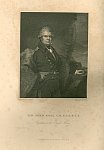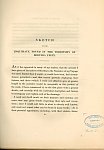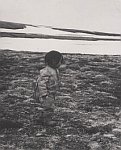Human Adaptation in the Arctic Environment
Author: Curt McManus Page 1 | Page 2 | Page 3
From 1829 to 1833, Commander (later Captain) Sir John Ross found himself marooned in the middle of the still largely unexplored and uncharted Canadian North. For four years, Ross and the crews of the poorly named ‘Victory’ and ‘Fury’ were trapped amidst the archipelagoes of the eastern arctic while searching for the North-West Passage. They also had the secondary objective of locating the lost Franklin expedition. Ross, a fine example of those 19th century dilettantes who dabbled in science and anthropology, used his time in the Arctic productively. He and the ships doctor conducted a number of experiments and made a series of observations about plant and animal life in the arctic. Ross also made some observations on the Inuit who they encountered during their stay along the Boothia peninsula. His observations were surprisingly modern given his age, status and the ideals which he represented.
The “Esquimaux” as he called them, had developed a complex society whilst being “cut off, isolated and insulated” from the outside world. That this society functioned so well in such an unforgiving area of the world provoked both wonder and admiration in Ross. Indeed, one of the central points of interest to the lost explorer was the question of how the Inuit could survive and be comfortable while he and his men could not. In his writings afterward, Ross noted that “they could travel easier than we, could house themselves with a hundredth part of the labor, could find delights where we only experienced suffering, could outdo us in killing the seal and could regale on abundant food where we should starve.” Ross spoke of the “severe suffering” of him and his crew and said that it was only an act of “merciful providence” which allowed them to gain passage home.
The experience of the Captain and crew of the Victory and Fury illustrates an interesting point. Ross and his men spoke of having “endured” and “suffered” in those harsh arctic conditions for four years. But for hundreds of years, the Eskimo he encountered had called the arctic home.
The natives of the Canadian North have lived in the arctic for centuries. In fact, the presence of people in that region dates back 5,000 years, and over the course of that time northern natives developed a singular and distinctive way of life, one which revolved around the unique environment of the region. Natives were compelled to adapt to the conditions of the arctic. The harsh and unforgiving environment demanded it. It is a region of extremes: of cold and of isolation and adapting to this region covered just about every element of Innu life. The environment, for example, dictated when, how and where the Innu hunted. It even affected the very structure of the communities in which the Natives lived.
On this latter point, Historian Ken Coates said the sub-arctic way of life demanded “a more flexible approach to social organization.” Anthropologist R.G. Williamson agreed noting that in the east-central Keewatin district (the district through which the Ross enterprise stumbled for four years) a typical community consisted of only ten or twelve families, each of which was highly interdependent on the other. In this way, over-hunting could be avoided and this was particularly important because over-hunting the not always sufficient stock of game could lead to starvation. So, community structure itself was based solely around the conditions of the Northern environment and its sometimes meager resources.
There were two main native groups who resided in the three major regions of the arctic. The Dene people occupied the forested Mackenzie River and Yukon Basins and the Inuit occupied the east-central Arctic Slope, that barren often frozen, snow covered land which people frequently imagine when they consider the arctic. Natives had occupied these areas for centuries in a static cycle of existence.




